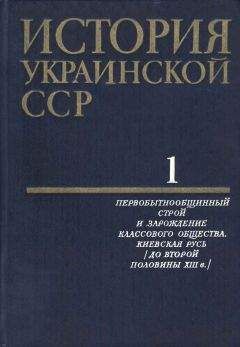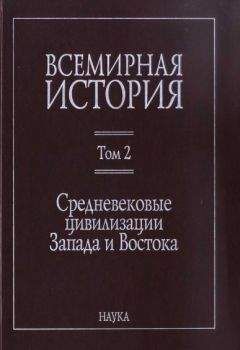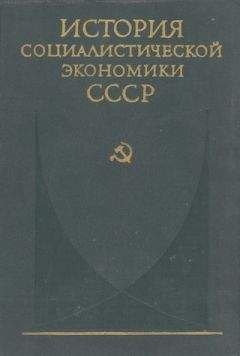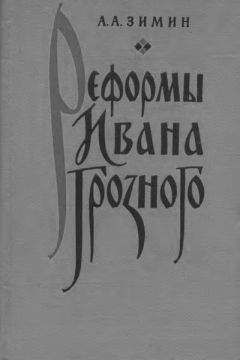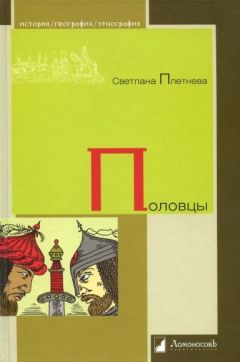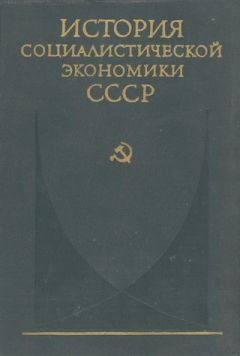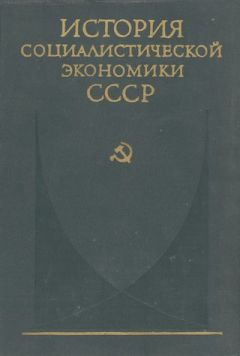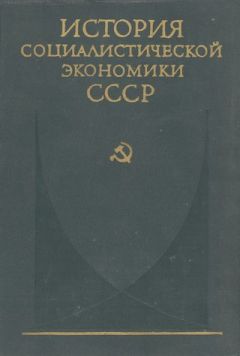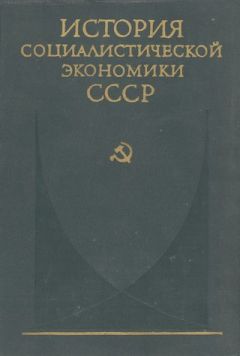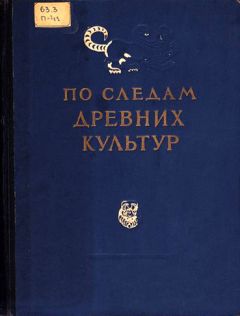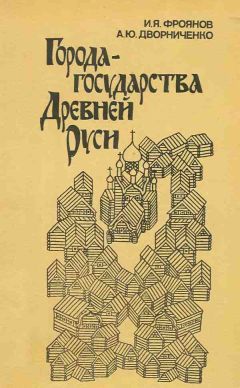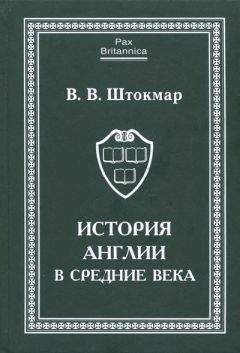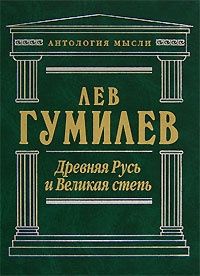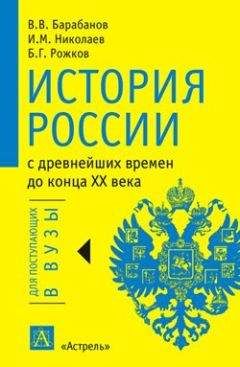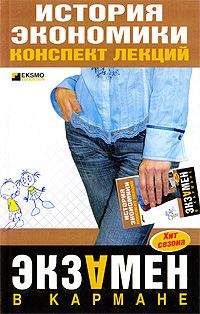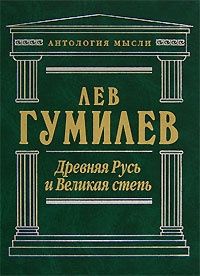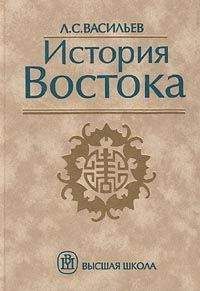Светлана Плетнева - КОЧЕВНИКИ СРЕДНЕВЕКОВЬЯ поиски исторических закономерностей

Скачивание начинается... Если скачивание не началось автоматически, пожалуйста нажмите на эту ссылку.
Жалоба
Напишите нам, и мы в срочном порядке примем меры.
Описание книги "КОЧЕВНИКИ СРЕДНЕВЕКОВЬЯ поиски исторических закономерностей"
Описание и краткое содержание "КОЧЕВНИКИ СРЕДНЕВЕКОВЬЯ поиски исторических закономерностей" читать бесплатно онлайн.
Книга посвящена выявлению и исследованию закономерностей социально-экономических отношений кочевников. Одновременно рассматриваются вопросы взаимоотношений земледельцев и кочевников, возникновения кочевнических культур. Изучение и систематизация закономерностей позволили построить ряд социально-этнокультурных моделей, существовавших в степях на разных ступенях развития.
Культ всадника был связан с культами огня, неба, солнца, коня, распространенных также у всех кочевых народов. Обычаи и обряды, подчиненные этим культам и вытекающие из них, также, естественно, были очень сходными у разных племен и орд, отделенных друг от друга громадными расстояниями. Например, погребальный обряд с сопровождающим человеческое захоронение конем или его частями известен от скифской эпохи почти до современности и от дальневосточных степей до дунайской равнины.
То же можно сказать и о материальной культуре. Прежде всего характерно, что все амулеты, связанные с перечисленными выше культами, имели всюду не только одинаковую смысловую нагрузку, но и близкое по виду исполнение.
Вторым, не менее важным компонентом, свидетельствующим о единстве культурных традиций, является изготовляемая ремесленниками сбруя коня (удила с оголовьем и стремена с седлами), а также украшения сбруи (наборы разнообразных блях).
Третьим компонентом, имеющим непосредственное отношение к всадничеству, является наступательное оружие и оборонный доспех, а также типичнейший для воина-кочевника атрибут — пояс, состоящий, как правило, из набора бляшек, наконечников и пряжки. Пояса служили рыцарским знаком воина, игравшим ту же роль, что и золотые шпоры у западноевропейского воинства.
Наконец, культурная общность выражалась и в весьма единообразных изображениях всадников и коней, разбросанных на скалах и камнях по всей евразийской средневековой степи, а также в своеобразии доходящих до нас орнаментов, которые являются по существу сложными и весьма абстрагированными идеограммами духовной жизни создавшего их населения.
Культурная общность была своеобразна для каждой эпохи, т. е. она изменялась во времени, но очень мяло — в пространстве. Все многочисленные выделенные археологами культуры являются локальными или локально-временными вариантами огромной и сложной кочевнической (всаднической) культурной общности в каждую эпоху, охватывающую всю евразийскую степь. Характерно, что гибель отдельных вариантов этой общности не изменяла и не нарушала ее развития в целом.
Вопросы формирования и существования в средневековых степях культурных общностей крепко связаны с закономерностями социально-экономического и этнического развития кочевого населения Евразии. Именно поэтому постановкой этой проблемы мы и завершим наше исследование[261].
SUMMARY
Nomads first appeared in the steppe towards the beginning of the 1st millennium В. C. and in the next 500 years completely replaced pastoral population. The European and Asian steppe and forest-steppe zone were thus for more than three thousand years turned into a nomad area.
Nomadism, according to modern ethnographers, is characterised by a producing economy based on extensive cattle-breeding, with most of the population roaming with their herds all year round. This definition, however, concerns only the economic aspect of nomadism, for nomadism is more than an economic system. It is a way of life, with its own material and spiritual culture and religious beliefs, social and political history.
A study of nomadism in its totality or of its individual aspects will reveal law-governed regularities equally applicable to any nomad community. We can thus group, for the purpose of comparison, different peoples and ethnoses which roamed the steppe at different periods.
The purpose of this book is to disclose these regularities and to construct, on their basis, certain socio-ethnic and cultural models of the different stages of economic development.
Ethnographers now identify three types of the nomad economy: complete nomad economy with no forms of agriculture or settled way of life; semi-nomad economy with permanent winter camps and partial stockpiling of fodder; semi-nomad economy, with parallel existence of agriculture and settled way of life. Each type had its own pattern of social relations: ail-communal social relations, and in the third, class relations.
Let us examine the complete nomad type, which may be called the tabor type, no longer extant in the Eurasian steppe. Yearround mobile pasturing remains an unavoidable form of cattle-breeding only in the especially arid Cicumcas-pian and Mongolian steppe and semi-deserts. There the cattle can be fed only by moving the herds from one meagre pasture to another.
In the Middle Ages lengthy droughts and frosty winters lorced the nomads to seek new pastures. The search was often a long and tortuous process, and in these conditions the tabor economy was the only possible choice.
The need for new territories for pasture and battue hunting made warriors of the nomads, for no people would cede their territory voluntarily. Nomad invasions were aimed at the seizure of a territory through the complete or partial annihilation of its population. In some cases part of the conquered people would be incorporated into the nomad community. The invasions involved the entire nomad population, men, women, children, old and young (young women joined the ranks of mounted warriors) with their herds and tents. At this stage termed «military democracy" by the classics of Marxism, the socio-political structure took the form of conglomerations of the tribal-union type, usually led by active members of influential and rich clans, one of which had initiated the invasion.
As a rule, the armed drive for new lands originated in a limited steppe region and was the result of events that made it inevitable. Most of the population mounted their horses or followed the warriors in covered carts, carrying with them their property and leading their herds. At the start, the population usually belonged to one ethnic and linguistic group compact enough to be considered an ethnic community, but one in a state of constant division into related ethnic groups.
Such detached groups began to roam the steppe on their own in search of «vacant» territory, i. е., occupied by a military weaker ethnos. The advancing hordes would, on their way, conquer, ruin and absorb parts of tribes and eth-noses. Thus, the prerequisites were created for the formation of a new ethnic community, and, above all, of a new socio-political conglomeration. The same applied to material culture: every group was a bearer of the «material cul-ture» which practically disappeared in the long and tortuous wanderings, hard-fought battles and cultural assimilation. Only military innovations which had brought victories to the conquerors remained unchanged.
A new syncretic culture was formed, a blend of many disparate cultures and influences.
What remains to the archaeologist of the early nomad culture? This multi-ethnic, multi-cultural, multi-lingual conglomeration of tribes and hordes, tied into tribal and horde unions by their leaders, continuously roved the vast hostile steppe. They had neither permanent winter camps where cultural layers may be found nor permanent clan burial grounds. Usually they buried their dead in mounds, common in steppe, left over from previous epochs (the so-called secondary burials), or in thoroughly concealed ground burials. The custom of concealing burials was followed by the nomad nobility up to the 13th century. The tabor period has left the archaeologist single burials in the steppe, seldom intact, which one can come across only by chance, though precisely these burials yield interesting information: different burial rites testify to patchy ethnic patterns; «equal» burial complexes (with the exception of the gold-covered burials of chieftains) testify to the prevalence of the military democracy.
There is no doubt that this stage was common to all the nomadic peoples of the Eurasian steppe. Unfortunately, historical sources concerning the nomads at this initial stage are of a scanty, fragmentary and, very often, distorted character: an avalanch of nomads destroying everything on its way gave rise to hatred and horror, rather than ethnographic interest.
The seizure of new lands was followed by adjustment of relations with the conquered tribes and neighbouring states and peoples. This ushered in the next period, a «pe-riod of finding a new homeland", and this entailed economic development of the seized territory. Pasture lands were allotted to each tribe and clan, according to their sizes, and permanent seasonal camps were established. At first, the alloted territories were large, accomodating a large, usually consanguineal collective. It was called kuren by B. Ya. Vla-dimirtsov and the corresponding economic type — kuren economy. The rise of the kurens marked the beginning of the decay of the clan-tribal society. This process started within the framework of the military democracy and further developed in the early class society.
Consolidation of class relations, the impoverishment of common nomads and the concentration of wealth in the hands of individual families, led to the division of the kuren communities into smaller economic units. The first to leave the kurens were the rich families with their kinsmen and large herds. These smaller economic units are termed ails. Very often the ails were also fairly large as rich families were joined by poorer ones. Having not enough cattle to roam by themselves, poor people pastured the caltle of the rich, receiving payment in kind or, which was an important development, changed over to agriculture.
Thus, the first period of the second stage of nomadism was characterised by kuren roaming, while the second period — by ail roaming. Military democracy gave way to early class society marked by extreme patriarchality unknown to settled peoples. The patriarchal system enabled the rich (the clan nobility) to mask their tendencies to absolute power. The more influential and rich aristocrats were «elected», according to an ancient custom, leaders (khans) of large conglomerations and simultaneously became supreme priests. A basically new form of conglomeration of a number of independent ails arose on the former kuren territory. Such conglomerations came to be known as «horde». Their essence was everywhere the same — they were agglomerations of non-consanguineal families and even included alien elements. Kurens and hordes were always ready to start military actions (the character of which had changed markedly) provided there were enough warriors, for at the second stage of nomadism wars were waged by warriors, and not by the entire population as at the first stage. Women, children, old men, the horseless poor and domestic slaves comprising a large part of the ail population were not directly involved. Wars were now fought not for more pasturage, but for booty, slaves and the rich ransom imposed on a defeated enemy.
The nomads were confined to limited territory and gradually settled in their winter camps, where they frequently stored their considerable treasures. They thus became easy prey for their neighbours. Raids, known in the steppe as baranta, organised by neighbouring ails and hordes against each other, undermined their economy and impoverished the bulk of the cattle-breeders.
This situation of constant danger and uncertainty and the emergence of economically stronger and politically more powerful ails and hordes, created the vital necessity for large unifying organisations capable of regulating, albeit to a minimum degree, the external and internal policies of the steppe peoples. Such organisations took the form of horde unions, the prototype of the state or of state-type conglomeration, ruled by khans elected by the nobility from among the richest and most active elements. Their main functions were settlement of foreing policy problems (alliances with more developed states, organisation of large-scale raids) and prevention of internal strife and internecine wars. All this united ails and hordes around the khans.
On the whole, these conglomerations were more like tribal unions of the first stage of nomadism rather than states, for there was neither a regular army (the army was formed of volunteers), nor an administrative apparatus (judiciary, police, tax collectors), nor a tax system. Nevertheless, these were often far-flung and powerful conglomerations, usually referred to as empires in written sources. They owe their origins, first, to favourable historical conditions and, second, to the personality of the khan, his wisdom and energy, military skill, political shrewdness, diplomatic dexterity and ruthlessness towards his enemies. But the empire rested on the will of one man, the khan. His death would set off centrifugal tendencies, discord and internecine wars. The empire gradually disintegrated until it vanished from the chonicles and later from the face of the earth. In spite of this, the second-stage conglomerations became the cradle of a unified common culture, a unified world outlook and a common language.
Large amorphous first-stage communities were sociopolitical conglomerations. At the second stage they gradually acquired common ethnic features, the dominant among ones being language and culture. They thus contributed to the emergence of ethnic communities — the prototypes of peoples.
Archaeological monuments of this period differ considerably form earlier ones. Permanent seasonal camps on the territory of an ail or a horde where traces of human activity were discovered (broken artifacts, pottery, bones) and permanent burial grounds nearby, where the dead were buried in graves with small stone or earthern mounds provide valid archaeological material. Besides, the steppe people began building ancestor cult sanctuaries during the patriarchal-clan period, and of the military leader cult in the period of the disintegration of tribal-clan relations.
Подписывайтесь на наши страницы в социальных сетях.
Будьте в курсе последних книжных новинок, комментируйте, обсуждайте. Мы ждём Вас!
Похожие книги на "КОЧЕВНИКИ СРЕДНЕВЕКОВЬЯ поиски исторических закономерностей"
Книги похожие на "КОЧЕВНИКИ СРЕДНЕВЕКОВЬЯ поиски исторических закономерностей" читать онлайн или скачать бесплатно полные версии.
Мы рекомендуем Вам зарегистрироваться либо войти на сайт под своим именем.
Отзывы о "Светлана Плетнева - КОЧЕВНИКИ СРЕДНЕВЕКОВЬЯ поиски исторических закономерностей"
Отзывы читателей о книге "КОЧЕВНИКИ СРЕДНЕВЕКОВЬЯ поиски исторических закономерностей", комментарии и мнения людей о произведении.





